How to round numbers
Rounding numbers makes a number look simpler, but it also makes it so that the number is no longer exact. Why do we sometimes round numbers?
Imagine if you were trying to pay for your meal and you had a can of pop that costed $1.09, a slice of pizza that costed $2.96, and a salad that costed $3.12. When it comes time to pay and you want to quickly figure out around how much you'll need to take from your wallet, you can round numbers to, for example, $1 + $3 + $3, which gives you an approximate amount of $7. It makes calculations easier.
Rounding also makes it easier to describe and understand a numerical figure. For example, if you made $625 at your part-time job each month, you could instead say "I make around $600 a month". Rounding still gives others a good idea of the number you're trying to convey, while making it simpler to grasp.
Another good reason to use rounding is that sometimes, you simply don't have to be exact. If someone approached you on the streets asking you where the nearest restaurant was, instead of saying it's a 26 minute walk, you could tell them it's about half an hour (30 minutes) away.
So how do we round numbers? Let's try out some practice problems.
How to round to the nearest whole number
Question:
Round the following number to the nearest: i) ten ii) hundred iii) thousand
9706
Solution:
- Ten
So how will we be rounding numbers to the nearest ten? We know that finding the tens means we'll be focusing on the last two digits in the number.
9706
The method to rounding numbers is to decide on which part of the number to keep, and then round the other part. One of the more common ways to round numbers is to see if you'll need to round up or round down. A rule of thumb is that if the number is less than 5, we'll round down. If it's 5 or greater, we'll round up. Since "6" is more than 5, we'll be rounding up numbers:
9710
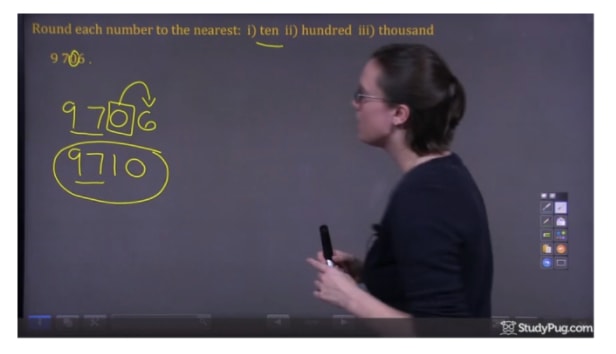
- Hundred
How about rounding numbers to the nearest hundred? As we're dealing with hundreds, focus on the second and third digit:
9706
Figure out which part of the number we'll want to keep, and then round the end.
9700
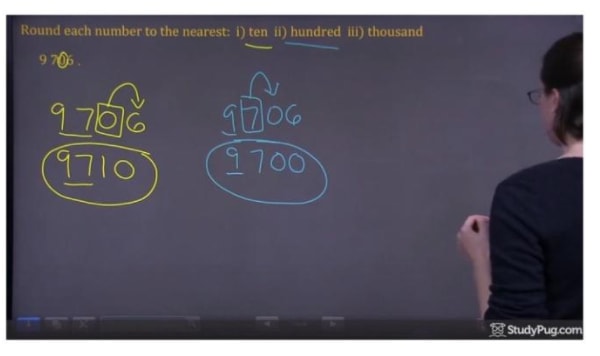
- thousand
Now we focus on the first two digits,
9706
Rounding that number gives us:
10000
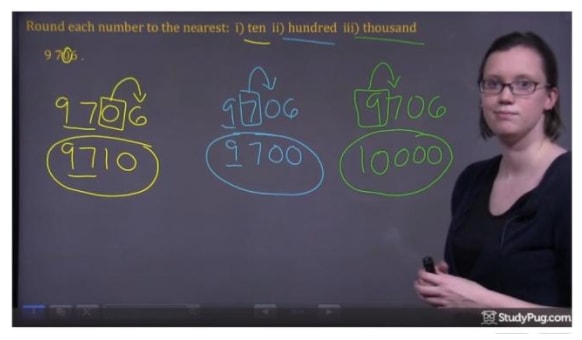
Now you've understood how rounding whole numbers work!
But what does rounding decimal numbers look like? Basically, it's the same concept as dealing with whole numbers. Let's take a look.
Question 2:
Round the number to the nearest i) tenth ii) hundredth iii) thousandth
0.4572
- Tenth
Focus on the second and third digit,
0.4572
And then round the number
0.5000
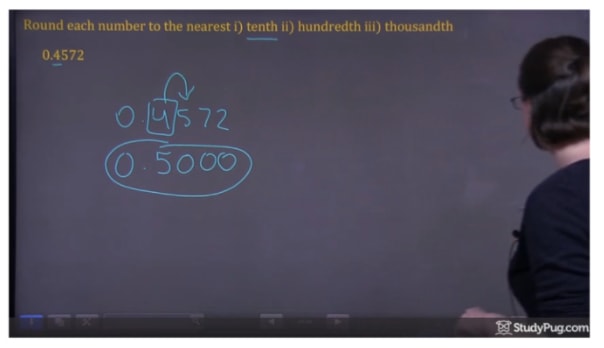
- Hundredth
Focus on the third and fourth digit,
0.4572
And then round the number
0.4600
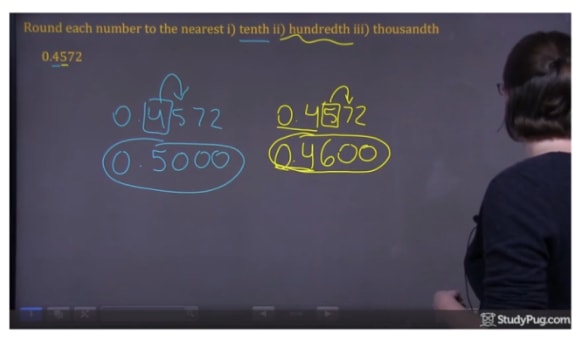
- Thousandth
Focus on the last two digits,
0.4572
And then round the number
0.4570
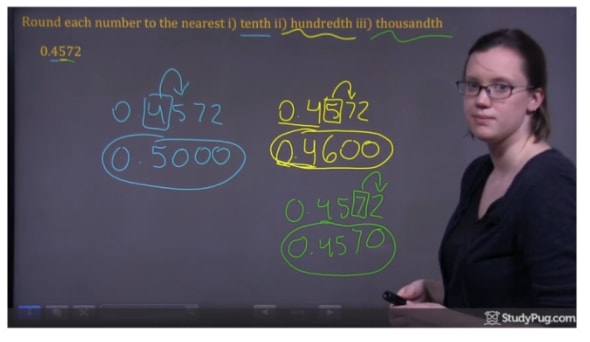
Always remember to first identify which numbers you'll be considering when rounding (the place value). Then, use the rule of rounding up and down to determine what the final number will be.






